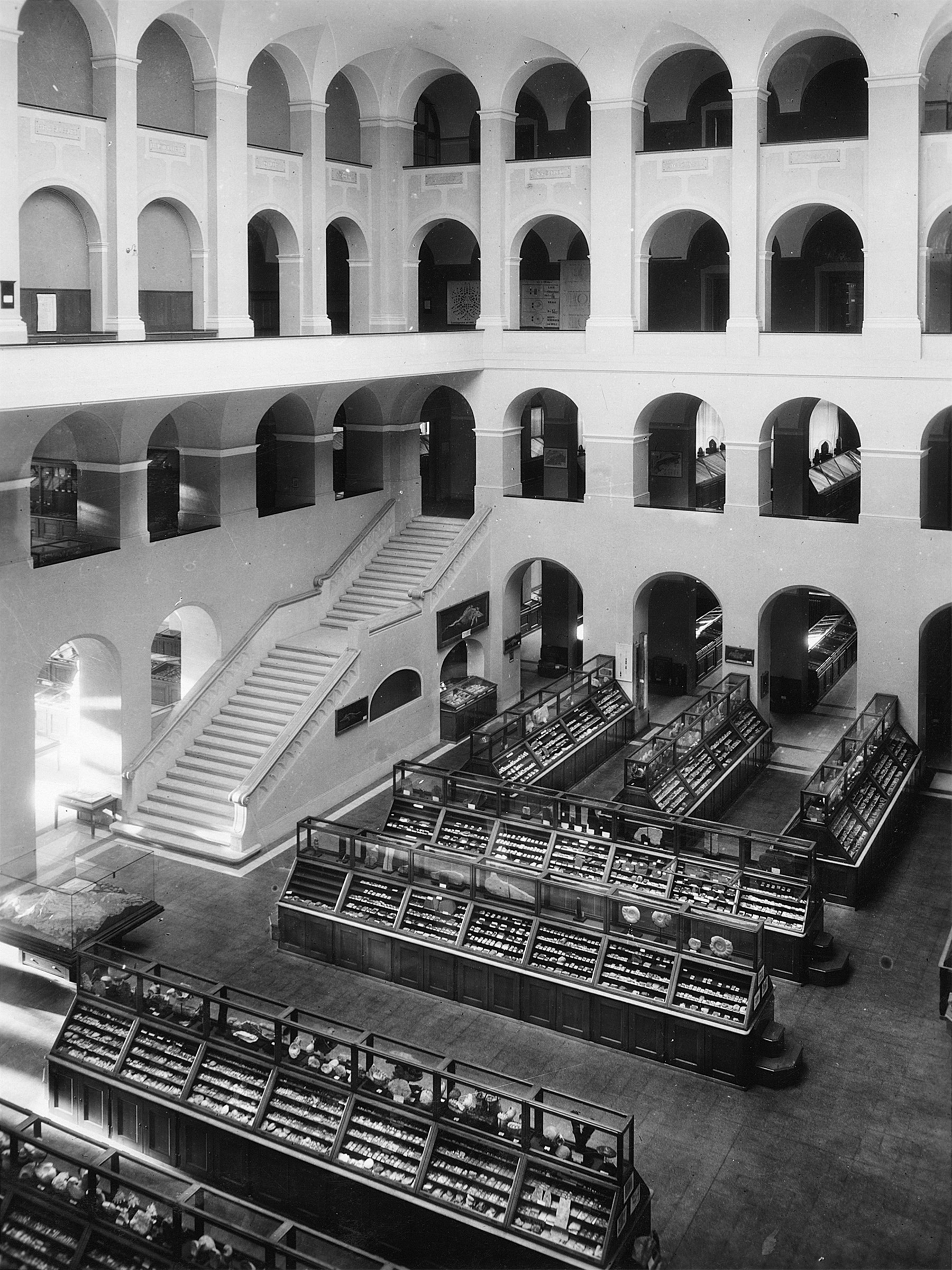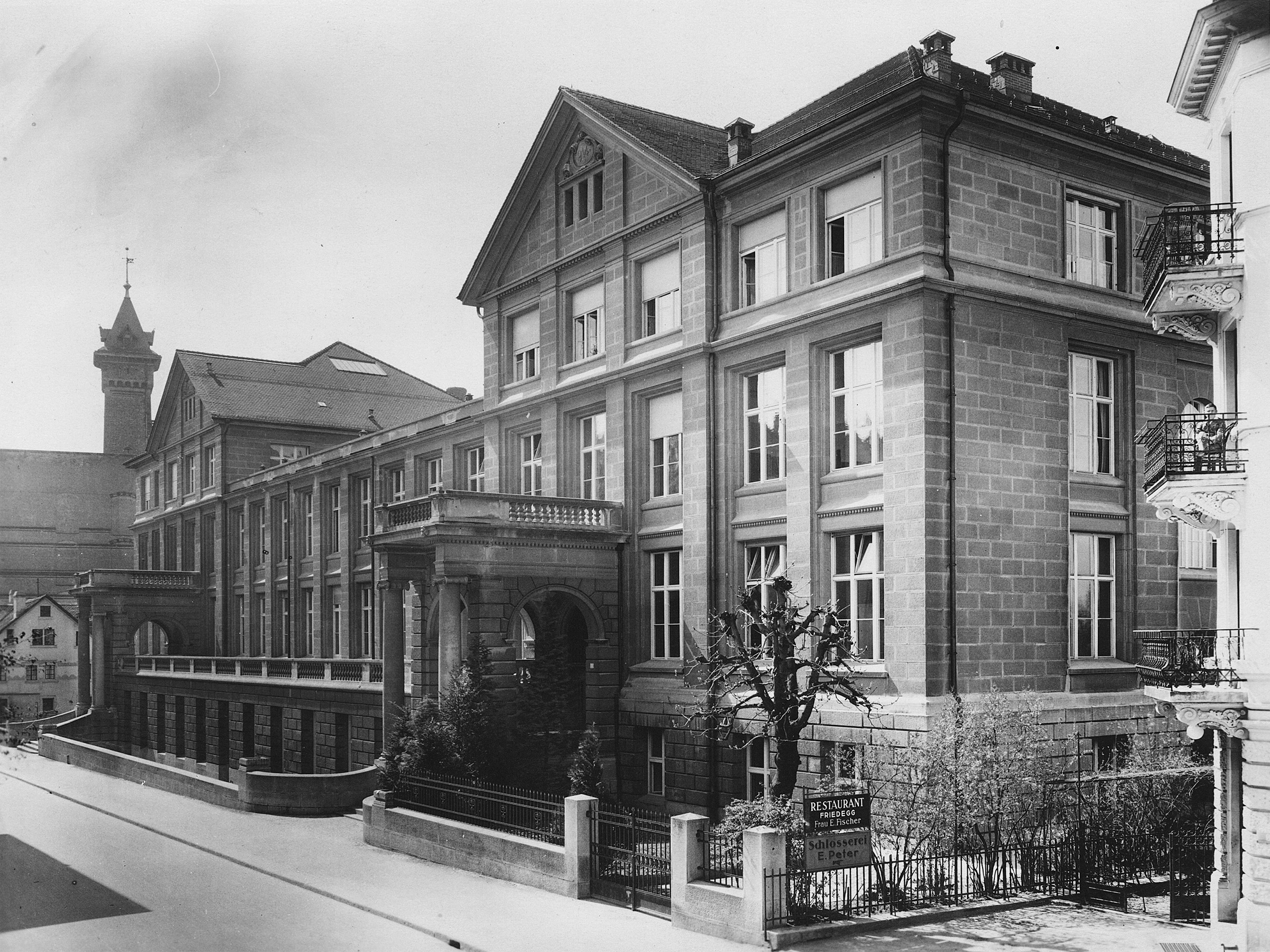History of the Department of Earth Sciences
by Hans R. Thierstein, Professor Emeritus at the Department of Earth Sciences
From the geology of the Alps to the global geosystem
Two double-professorships in Geology were created with the University of Zurich during the foundation years of the ETH Zurich: Arnold Escher von der Linth was first appointed in 1855 on the Chair of Geology and Adolf Kenngott in 1856 on the Chair of Mineralogy. Teaching and research were then devoted to the geology of the Alps (e.g. Albert Heim, Professor 1873-1911). Since about 1960, research and teaching activities increasingly expanded towards global issues, for example with the appointment of Augusto Gansser (Professor from 1958 to 1977). Since then, the discipline diversified considerably to become Earth Sciences thanks to the creation of several professorships in geophysics, engineering geology, isotope geology, micropaleontology, structural geology, etc.
Broadening the discipline in the second half of the twentieth century allowed introducing modern methods such as seismology and rock magnetism and top-of-the-art analytical facilities such as electron microscopes, mass spectrometers and rock presses. More recently, computing capacities prompted a quantitative orientation of many, hitherto predominantly qualitative disciplines such as structural and engineering geology, stratigraphy, sedimentology and micropaleontology.
Over the years, strong Institutes of several professors emerged from the initially few chairs in Geology; they recently gathered to form the Department of Earth Sciences.
Institutional development
The Department of Earth Sciences (D-ERDW) was founded in 1979. The motivation was to coordinate the teaching and the professorial planning of three groups: the Geological Institute, the Department of Crystallography and Petrology and the Institute of Geophysics. Another purpose was to jointly manage geological collections, organise earth-related exhibitions and operate workshops. The Geographical Institute of the ETH and the Paleontological Institute of the University of Zurich were associated to promote close collaboration in research and teaching. The ETH Geographical Institute has been redesigned in 2001 as the Institute for Atmospheric and Climate Science and supervises since then a notable proportion of graduate students (MSc in Atmospheric and Climate Science) in Earth Sciences.
The D-ERDW has evolved constantly since its foundation. Cooperation between the participating institutes and chairs has become increasingly close in planning, teaching, operating and research.
Important turning points in the development of the Department were the introduction of the Environmental Sciences course (1987), budget autonomy (since 2000) and the transfer of the Chair of Crystallography to the Department of Materials (2003).
The Department of Earth Sciences now consists in 20 chairs distributed in three institutes: the Geological Institute, the Institute of Geochemistry and Petrology, and the Institute of Geophysics. The D-ERDW also includes workshops and laboratories, the Georesources Switzerland Group, focusTerra, and the Swiss Seismological Service (SED).
Professorships in Earth Sciences at ETH Zurich
ETH Zurich: Leading the way since 1855
Established in 1855 as the Federal Polytechnical School, ETH Zurich has, from the outset, been a national centre for education with international appeal, attracting talent from all over the world.
The successful combination of a cosmopolitan outlook with national roots made the young educational institution one of the driving forces behind industrialisation in Switzerland: it brought the necessary expertise into the country, trained technical specialists and helped set up groundbreaking national infrastructures.
ETH Zurich was given its present name, Swiss Federal Institute of Technology (Eidgenössische Technische Hochschule), in 1911. Over the decades that followed, it entered into solid partnerships with the state and with industry and invested increasingly in both applied and fundamental research, which were gaining in importance in relation to education. The university grew steadily and in 1961 it embarked on the first stage of constructing its second site on the Hönggerberg, on the outskirts of Zurich.
In more recent times, global developments such as computer-assisted data processing and the far-reaching consequences of globalisation have placed ever-increasing demands on universities. ETH Zurich reacts to these new challenges by creating flexible organisational structures: new research units and programmes have emerged and the research itself is becoming more and more integrated and interdisciplinary. The long-standing tradition of ETH Zurich, combined with its ability constantly to adapt to new requirements, have brought great success to the university. Today, it ranks among the world’s leading universities of science and technology.




